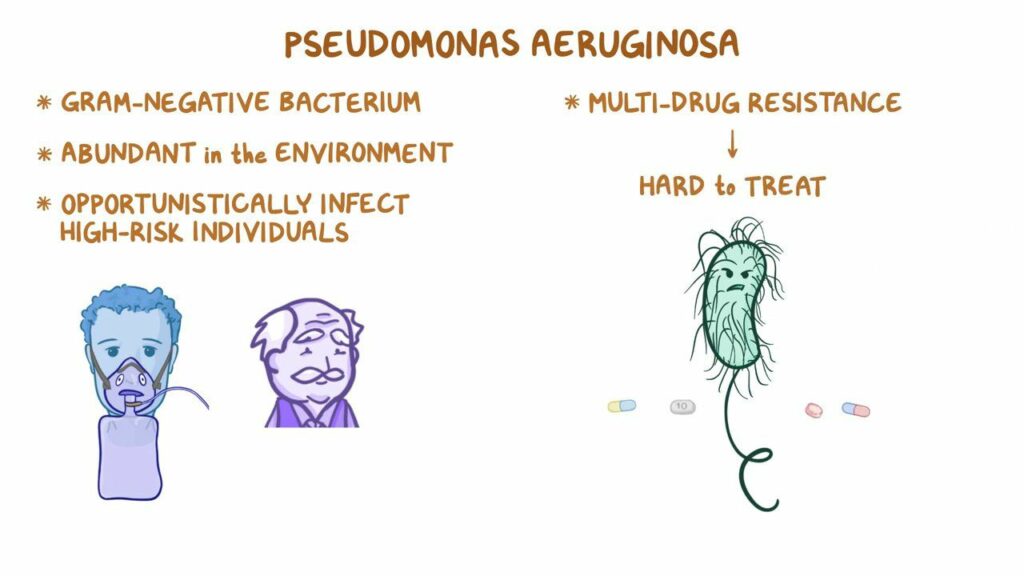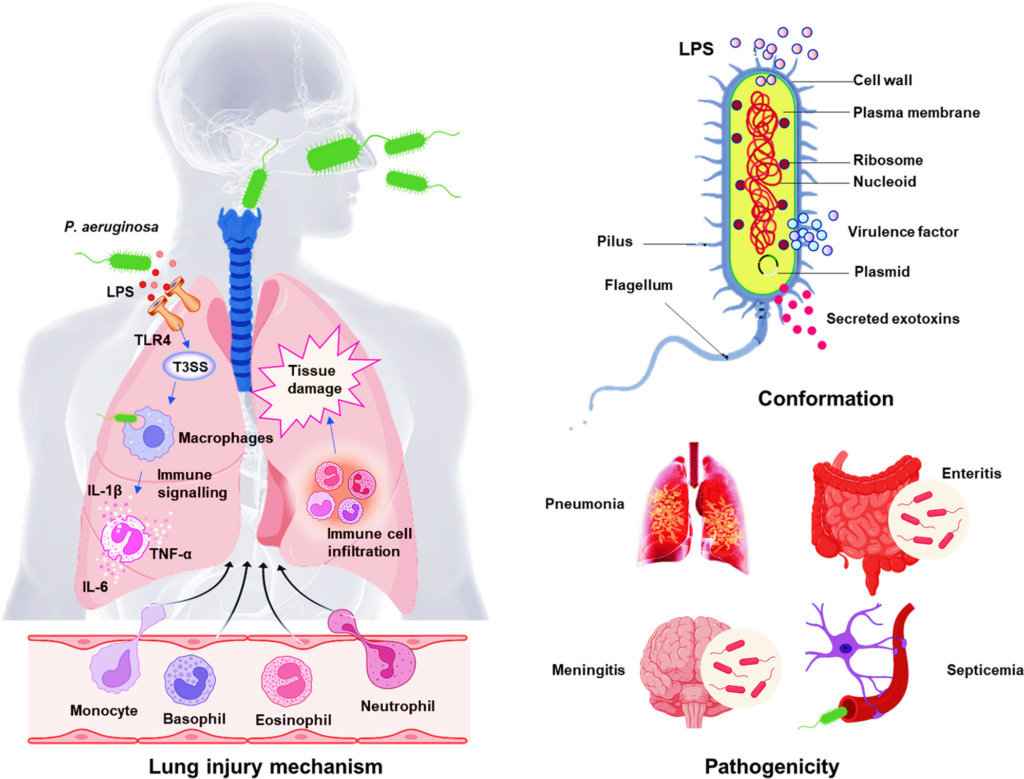Pseudomonas aeruginosa Treatment
A pseudomonas infection is a sickness that can be acquired from strains of the Pseudomonas bacteria. The most common type that can cause the majority of infections seen in individuals is Pseudomonas aeruginosa. P.aeruginosa is commonly found in the environment, like water, plants and soil. It is also abundant in wet living areas like bathtubs or sinks. While it can also… Read More
Pseudomonas aeruginosa Treatment
A pseudomonas infection is a sickness that can be acquired from strains of the Pseudomonas bacteria. The most common type that can cause the majority of infections seen in individuals is Pseudomonas aeruginosa. P.aeruginosa is commonly found in the environment, like water, plants and soil. It is also abundant in wet living areas like bathtubs or sinks. While it can also be found commonly on the skin, it usually is not able to cause an infection in that state. This is sometimes referred to by healthcare experts as bacterial colonization.
A P.aeruginosa infection can be very difficult to handle because due to the evolving of the bacteria, many of the antibiotics that would typically treat the condition do not work anymore. This can be called antibiotic resistance. However, it is rare for the infection to develop in people with healthy immune systems, it usually requires a compromise of the immune, whereby it can become a severe and potentially deadly situation.
The common causes of a weakened immune system are cancer, HIV/AIDS, diabetes, kidney diseases, organ transplants, pregnancy, surgery, severe burns, cystic fibrosis, etc. The infection while not being a form of sepsis can cause sepsis. Studies have shown that P.aeruginosa is a common cause of sepsis in people who have suffered severe burns. Infections can occur anywhere in the body, and the symptoms seen will depend on which part of the body is infected.

What causes a Pseudomonas infection?
While many types of bacteria from the genus Pseudomonas can cause a pseudomonas infection, the most common type to cause an infection is the P.aeruginosa. The pseudomonas bacteria can grow and spread in many different ways, like:
- Soil
- Food
- Skin contact
- Contaminated medical devices including catheters
- Water from a lot of different sources like bathtubs, sinks, kitchens, pools, humidifiers, etc.
The most common way a person acquires a pseudomonas infection is through contaminated surfaces or hands, but it can be transferred from person to person.
What are the symptoms of pseudomonas infections?
While the specific symptoms will depend on where the infection is occurring, infections that occur on the skin are usually less severe than the ones that occur in the blood or organs like the lungs. Symptoms on different parts of the body include:
- Blood – This can be referred to as bacteremia. This is one of the most severe forms of the infection caused by pseudomonas. The symptoms may include; fever, chills, fatigue, and joint and muscle pain. The infection can also lead to very low blood pressure which is called hemodynamic shock. This can lead to the failure of organs like the heart, kidneys and the liver.
- Lungs – This is called pneumonia, and may elicit fever, chills, productive or unproductive cough, and difficulty in breathing.

- Skin – It usually affects the hair follicles and is called folliculitis. Abscess formation, redness of the skin and draining wounds may be seen.
- Eyes – The symptoms seen may include inflammation, redness, swelling, pain, pus and difficulty seeing.
- Ear – This affects the external ear canal and may be called Swimmer’s Ear. The symptoms may include ear pain, itching inside the ear, pain in the ear, difficulty in hearing and swelling.
- Urinary tract – This affects the individual’s urinary system and some of the symptoms are pain around the pelvic area, pain during urination, urinary incontinence, urge incontinence, and frequent urination.
How are pseudomonas infections diagnosed?
A physical examination will usually be carried out by the doctor. They will also enquire about the medical history and the recent symptoms that are experienced. They may take a sample of the blood, tissue or pus and send it to a laboratory. The lab will then test for the presence of the bacteria in the sample. Imaging tests may also be ordered to look for signs of the infection in other areas of the body. Tests like:
How is a Pseudomonas aeruginosa infection treated?
Antibiotics are usually used to treat the infection. A medical professional may prescribe any of the following:
- Gentamicin
- Aztreonam
- Carbapenems
- Ceftazidime
- Ciprofloxacin
- Ureidopenicillins
- Ticarcillin
There are different ways that these antibiotics can be administered, including orally, topically, through eye drops, intramuscularly or intravenously. The antibiotics may be taken for days, weeks or months, depending on the severity of the infection.
It is also important to note that pseudomonas infections are growing antibiotic-resistant, especially the ones gotten from hospitals or healthcare facilities. This is why an individual needs to take the antibiotics exactly as prescribed and finish the full dose even when the patient feels better or well again. This is to prevent a return of the infection which would prove more challenging to handle. It will take weeks or even several months for an individual to recover from a severe pseudomonas infection. However, if the individual has a mild infection, they should start to feel better after a few days of starting the treatment.
How can the infection be prevented?
An individual can lower their risk of catching the infection significantly through the following ways:
- Washing hands regularly – Washing the hands with antibacterial soap and clean water is the best way to prevent the infection. The use of an alcohol-based hand sanitiser can also be substituted for hand washing.
- Drinking clean water – If there is no clean water available, bottled, boiled, chemically treated or canned water should be taken.
- Avoiding dirty pools and tubs – It is essential to clean and regularly treat hot tubs or pool water with chlorine.
- Clean surfaces – It is important to clean surfaces with disinfecting products.
- Wash fruits and vegetables – Thoroughly wash fruits and vegetables with clean water before eating.
What is the outlook of a Pseudomonas aeruginosa infection?
The outlook is good, especially when the individual has a healthy immune system. Minor cases will usually clear up within a few days after proper treatment has started. A P.aeruginosa infection can be severe and even fatal if the individual has a compromised immune system. The individual may need to take more than one type of antibiotic for a longer period to treat the infection and stop the situation from getting worse.
